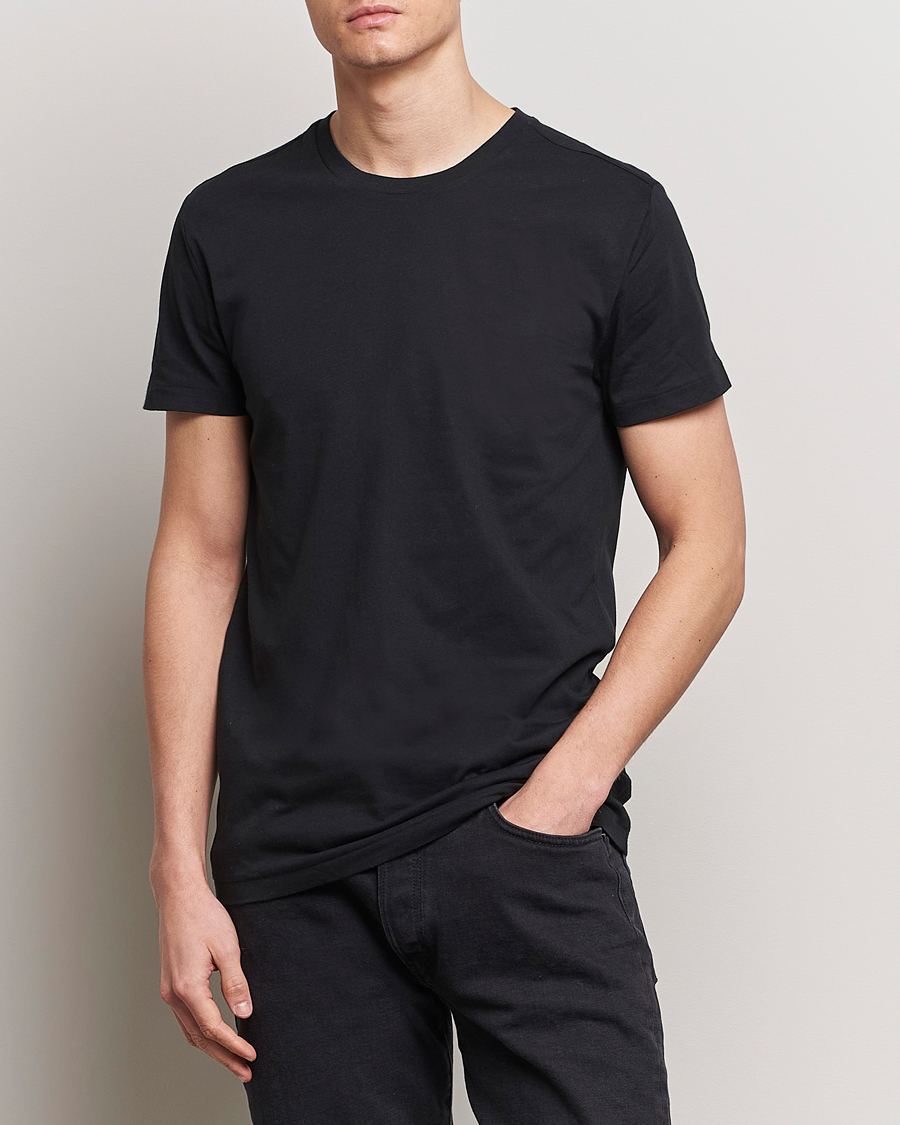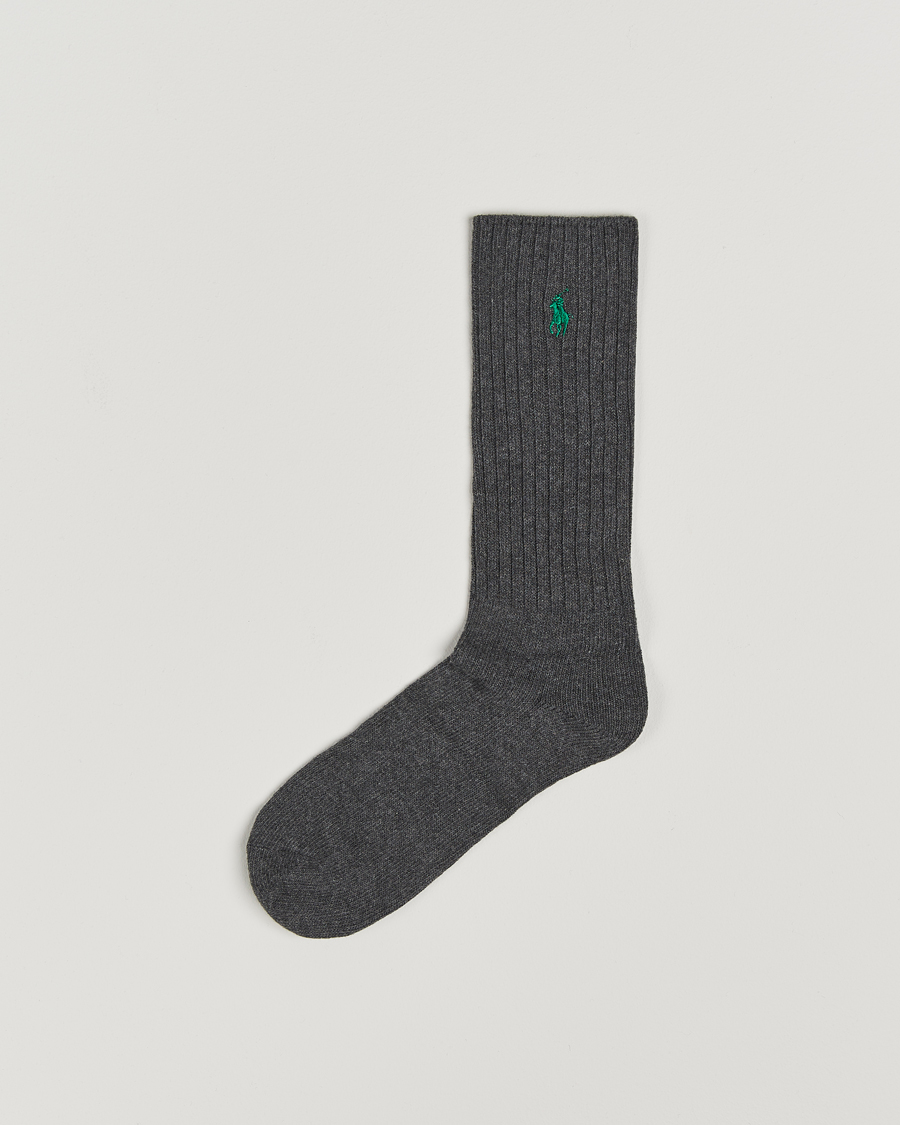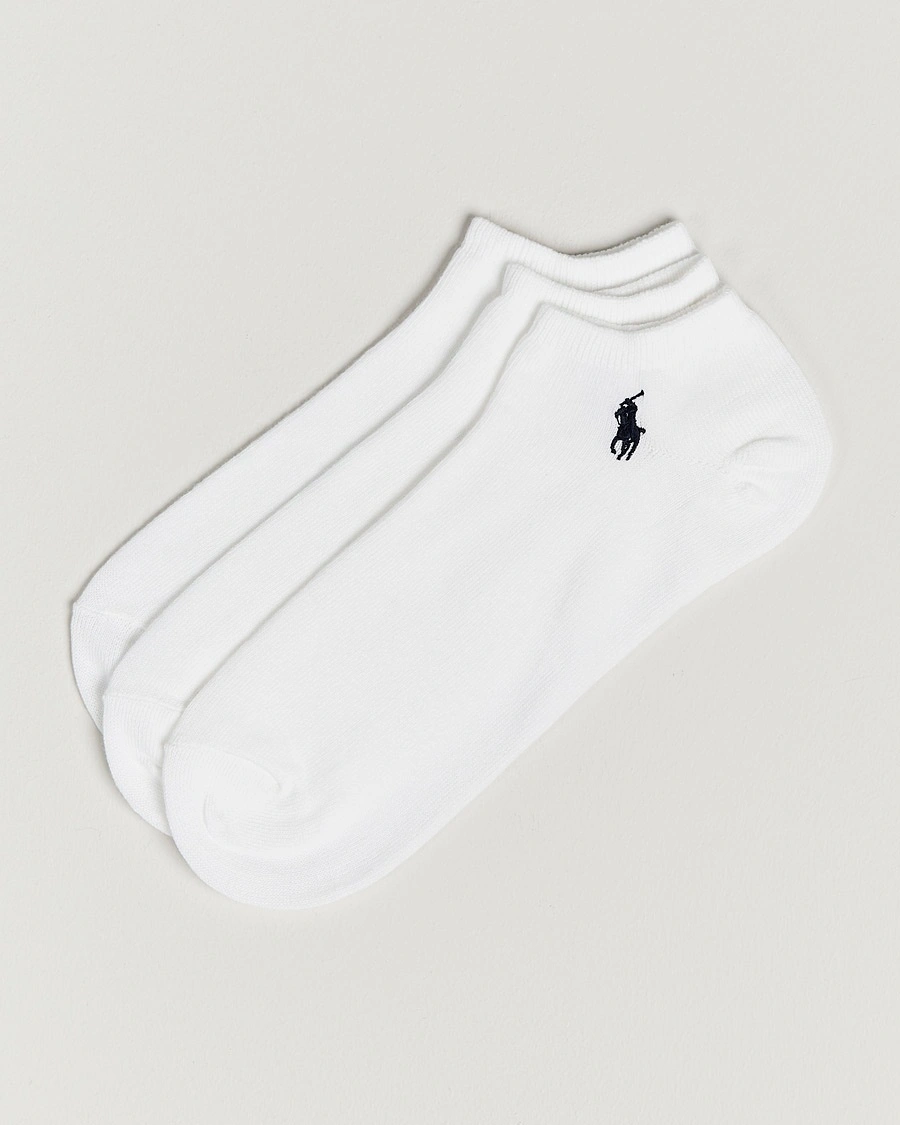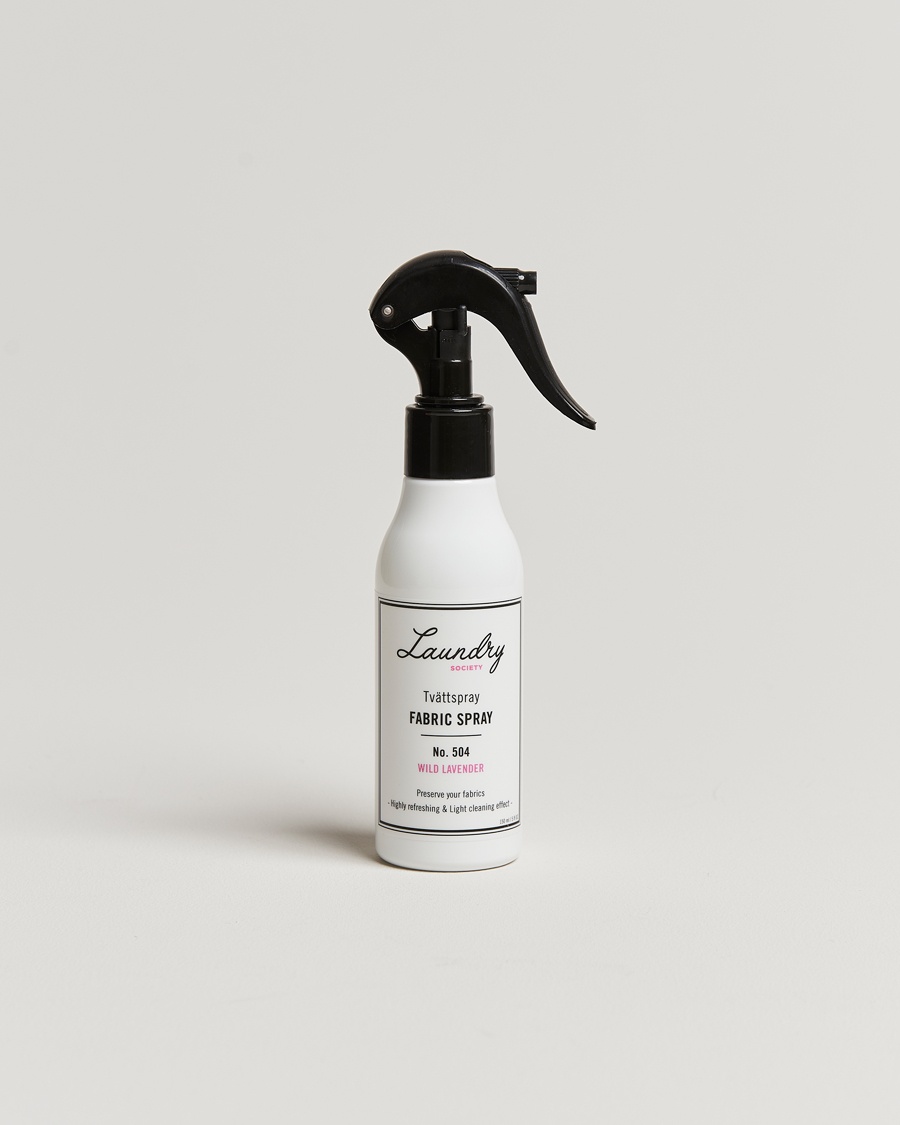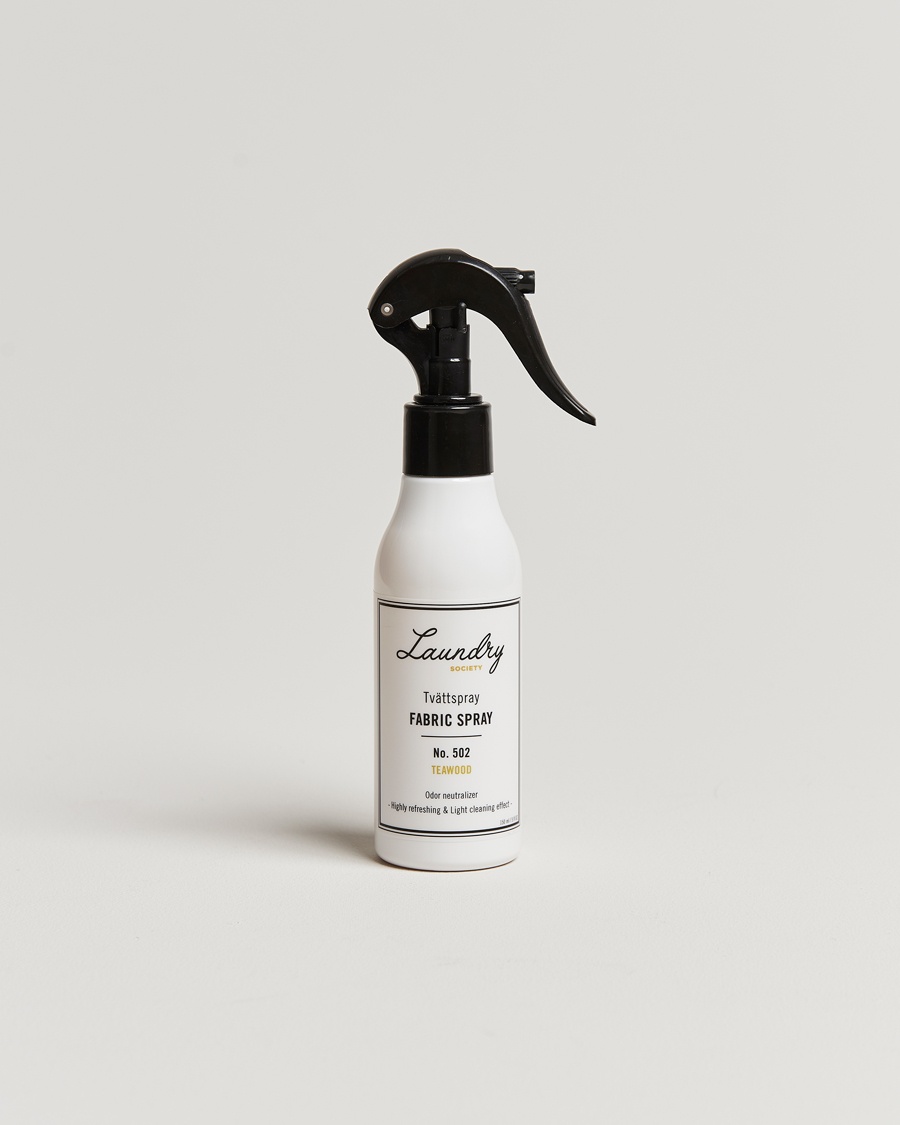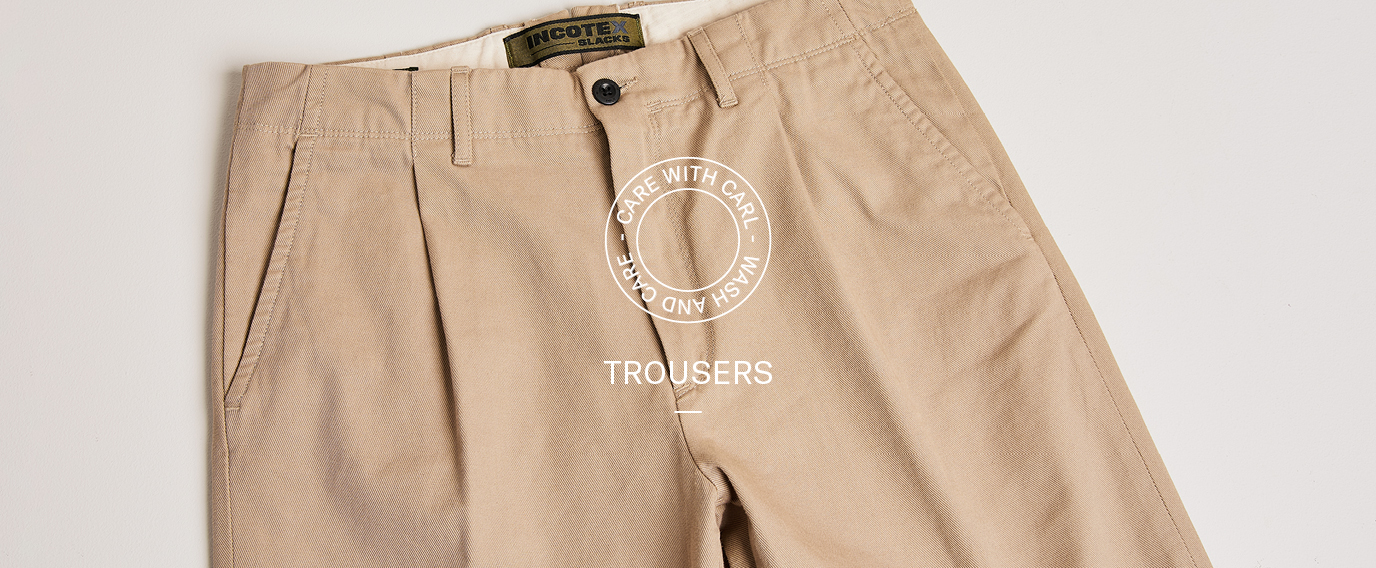
How to Care for Your Trousers
Published 2025-03-08
This guide applies to various trouser styles, including chinos, five-pocket trousers, cargo trousers, and other relaxed styles.
For jeans: How to Care for Jeans
For linen trousers: How to Care for and Store Linen Garments
For suit trousers: How to Care for Suit Trousers
Handle with Care
✔ To maintain both the fit and quality of your trousers, it’s important to wash them sparingly and with care. Frequent washing wears down the fabric and can affect both durability and appearance.
✔ Use your belt correctly—wearing a belt too tightly can cause wear at the waistband and belt loops.
✔ Rotate your trousers—avoid wearing the same pair every day. Trousers benefit from resting so the fibers can recover.
✔ Avoid overloading pockets—this can stretch and damage them over time.
✔ Invest in high-quality trousers—always check the material composition before purchasing!
Air Out Your Trousers
To freshen up your trousers between wears, hang them outside to air or use a steamer. This saves water and prevents the fibres from wearing out.
Spot Treat Stains
If you get a stain on your trousers, act quickly. Many stains become harder to remove if they are left to set into the fabric. Before opting for a full wash, try spot cleaning the stain—this often does the trick and spares the fabric from unnecessary wear. Spot treat the area using a cloth, detergent, and water. Different stains require different removal methods:
Read more: [How to Remove Stains]
Tips!
- Avoid excessive rubbing, regardless of the material, as it can cause fabric damage. Be especially careful with delicate fabrics.
- Always test stain removers on a less visible area of the trousers first to ensure they don’t damage the fabric.
Wash Only When Necessary
Be mindful when using the washing machine—for both your trousers’ sake and the environment. For minor stains, spot cleaning is often enough, while airing out can provide a quick refresh.
Follow These Guidelines for Machine Washing:
- Always follow the care label instructions. Different materials—such as cotton, linen, or blends—as well as different weaves may require specific handling. If the label is unclear, choose a gentle wash cycle that is safe for most fabrics.- Trousers typically require a low temperature, around 30–40°C (86–104°F), to reduce wear and preserve color. The lower the temperature, the gentler it is on the fabric and the environment.
- Turn the trousers inside out and close the zipper (if applicable) before washing to minimize friction.
- Use a mild liquid detergent to protect the fabric and color. For white trousers, choose a detergent specially designed for white garments.
- For stubborn stains, try pre-treating them instead of increasing the washing temperature.
Drying After Washing
Avoid using a tumble dryer, as high heat can shrink the fabric and affect the fit and quality. Instead, let your trousers air dry on a hanger or lay them flat on a drying rack.
Ironing or Steaming Your Trousers
Iron or steam your trousers at a low to medium temperature, always following the care label instructions. Different materials, textures, and weaves may have specific heat requirements to prevent damage. For delicate fabrics, use a steamer instead of an iron. Hang the trousers on a hanger and steam them slowly from top to bottom to smooth out wrinkles.
Store Your Trousers
Store your trousers on trouser hangers to maintain their shape and prevent wrinkles. This is especially important for chinos and trousers with creases. For casual trousers like sweatpants, cotton trousers, or cargo trousers, careful folding is sufficient.
Investing in quality hangers can make a big difference. Cedarwood hangers are a great choice, as they absorb moisture and help keep garments fresh.
Repair Your Trousers Instead of Replacing Them
If your trousers develop holes, try repairing them instead of replacing them. This extends their lifespan and reduces your environmental impact. Small holes that don’t affect the structure of the trousers can often be stitched up with a needle and thread or covered with iron-on patches. For larger holes, patching with a piece of fabric is a good option.
Take Them to a Tailor
Visiting a tailor has multiple benefits. Instead of buying new trousers, you can have them adjusted and refreshed for a perfect fit. A tailor can help with hemming, taking in or adjusting the fit, and repairing damage. Many trousers come in raw length specifically to be tailored to your measurements.
Pass Them On
If you no longer wear your trousers, sell or donate them to reduce waste and contribute to sustainability. Through our Pre-Owned section, your trousers can find a new life.





